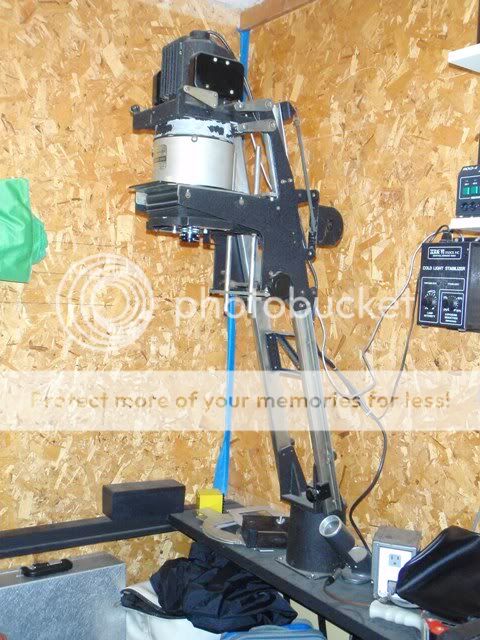tedzap
TPF Noob!
- Joined
- Jun 4, 2010
- Messages
- 3
- Reaction score
- 0
- Location
- Virginia
- Can others edit my Photos
- Photos OK to edit
Hello,
I am thinking about getting back into shooting with film, and also developing and printing in B&W. I started looking around for enlargers and am not sure what I should be shopping for. Any advice? It seems for a couple hundred you can get a lot these days.
Here is one that is fairly convenent and comes with a lot of extras. The gentleman is a professional photographer and says he will supply me with "everything I need to develop and print" for $150.
The enlarger he has is reported to be a Beseler that does up to 4x5. It has a zoneIV cold light system as well as the original condeser setup. However, looking at the image I am not sure what model it is.
Can anyone identify this enlarger? Is this a "pro" model or a "hobby" model? It doesn't seem as substantial as some others I have looked at. I have the room for a large projector, and as prices are so low it seems that I can probably afford whatever I decide on.
Here is a picture of the enlarger in question.

Thanks for the input,
-Ted
I am thinking about getting back into shooting with film, and also developing and printing in B&W. I started looking around for enlargers and am not sure what I should be shopping for. Any advice? It seems for a couple hundred you can get a lot these days.
Here is one that is fairly convenent and comes with a lot of extras. The gentleman is a professional photographer and says he will supply me with "everything I need to develop and print" for $150.
The enlarger he has is reported to be a Beseler that does up to 4x5. It has a zoneIV cold light system as well as the original condeser setup. However, looking at the image I am not sure what model it is.
Can anyone identify this enlarger? Is this a "pro" model or a "hobby" model? It doesn't seem as substantial as some others I have looked at. I have the room for a large projector, and as prices are so low it seems that I can probably afford whatever I decide on.
Here is a picture of the enlarger in question.

Thanks for the input,
-Ted

![[No title]](/data/xfmg/thumbnail/40/40305-2fbdc00adce4fac5e62dccb3f6f9c633.jpg?1734174713)


![[No title]](/data/xfmg/thumbnail/40/40302-79b0636c0b67a1ed65f8ad9e01c690e7.jpg?1734174711)
![[No title]](/data/xfmg/thumbnail/34/34346-f7996f51f0624620cfd54a488abeacf9.jpg?1734164887)

![[No title]](/data/xfmg/thumbnail/34/34348-b1d1a8e4f9da40319cac8b9f03cce084.jpg?1734164894)

![[No title]](/data/xfmg/thumbnail/35/35215-cb01ff31834a4ee952045622f00781a5.jpg?1734166876)
![[No title]](/data/xfmg/thumbnail/34/34345-5642c495cae8d6c7bb83c28664146cf1.jpg?1734164882)

